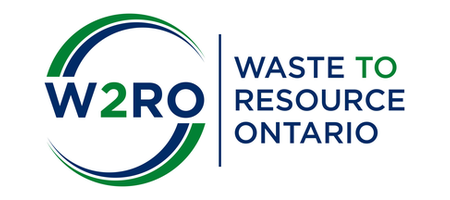Activity
-
ArticleBin Safety Guidline (Open-Top Containers) see more
This Best Management Practices Guideline outlines safety requirements for the manufacture, installation, use, and operation of Auto tarping equipment installed on roll-off hoist equipment. To download this document, click here.
-
ArticleMTO doesn't see the need to update Ontario's traffic laws to protect waste collection workers. see more
Ontario’s Ministry of Transportation responded this month to the OWMA’s call to require drivers to slow down and move over for waste collection vehicles with their flashing lights on, telling a local newspaper in Hamilton that the government isn’t considering updating the province’s traffic laws to protect frontline workers in Ontario’s waste management sector.
Transportation Ministry spokesperson, Bob Nichols, told the Stoney Creek News that Ontario’s Highway Traffic Act “reflects the need of emergency vehicles and tow truck drivers to work in dangerous, high speed and uncontrolled road side situations that are generally not representative of those faced by other users of flashing lights.”
As anyone in the sector can see, the comments from the Ministry demonstrate a serious lack of understanding about the challenges waste collection workers face on a daily basis, including working on rural highways.
The OWMA has followed up with the Ministry to seek clarification on the comments and will continue to highlight the importance of strengthening protections for waste collection workers, following two successful news conferences recently held by the association.
The first news conference was on the National Day of Mourning, Friday, April 28, at Emterra Group’s office in Elmira. It gave the OWMA the opportunity to speak with the media about the growing trend across North America to pass slow down, move over laws while highlighting the association’s support for Harris’s private member’s bill, which would require drivers to slow down and move over for waste collection vehicles and snow plows with their flashing lights on.
The second news conference was on Friday, May 5, at Waste Connections of Canada’s transfer station in Hamilton. There, the association and Waste Connections’ representative, Dominic Evangelista, stressed the importance of providing the safest possible working environment for waste collection workers.
The news coverage from the two events is below:
Ontario MPP wants to broaden ‘slow down, move over’ law
http://globalnews.ca/news/3429436/ontario-mpp-wants-to-broaden-slow-down-move-over-law/
Ontario’s waste management association gets behind "Slow down, Move over" bill by Tory MPP
Harris proposes Slow Down, Move Over to protect waste management and construction workers on roads
-
ArticleSWANA and EREF are seeking feedback to quantify and address needlestick injuries. see more
The Solid Waste Association of North America (SWANA) and the Environmental Research and Education Foundation (EREF) are conducting a joint research project to quantify and address the issue of needlestick injuries at Material Recovery Facilities (MRFs) in the United States and Canada.
Needlestick injuries are a serious risk to waste industry workers, especially in MRFs where sorting recyclables on picking lines and similar activities can put employees in contact with sharps and, as a result, blood borne pathogens.
The objectives of the survey are to inventory observances of needles and syringes in MRF waste streams in the U.S. and Canada and document the extent of needle-related incidences (both those that resulted in no injuries and those that did).
The OWMA would encourage members to participate to assist in better understanding the scope of the needlestick problem at MRFs in order to develop appropriate mitigation strategies, which may include regulatory proposals.
Results will be aggregated in a form that keeps the identity of individual facilities private. To take the survey, interested parties can access the project webpage here.
-
ArticleHeat Stress Guideline see more
This guideline for the management of “Heat Stress” is a Preferred Management Practice document. It describes the regulatory requirements related to the issue and the preferred practices in the industry that minimize health and safety risks related to heat stress.




